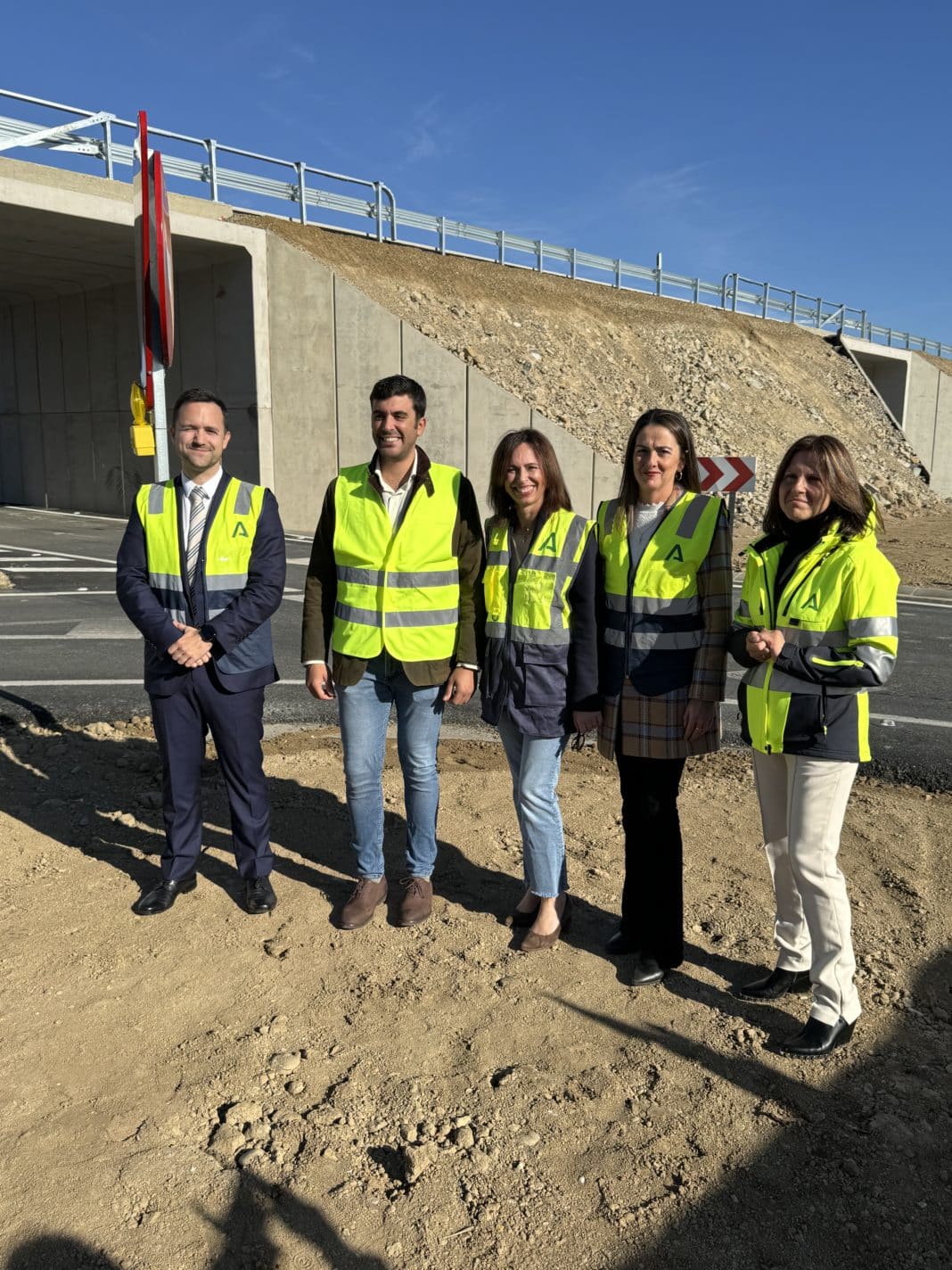The Regional Development Minister, Rocío Díaz, inaugurates the new junction, which has had an investment of close to three million euros
The Junta de Andalucía has put into service the new intersection that will reduce the risk of accidents at the crossing of the main lorry traffic route to Garrucha Port (A-370) and the Mojácar coastal bypass (A-1203). The Regional Minister for Development, Territorial Planning and Housing, Rocío Díaz, together with the mayor of the municipality, Francisco García, saw for herself the result of these remodelling works at the intersection, which has become a link at a different level following an investment of close to three million euros (2,997,464 euros).
“The Andalucian Government has acted on a critical point in Almería province’s road network, which led to a high accident rate, with the new intersection which provides more guarantees of road safety to the 13,000 drivers who go through this intersection daily”, stated the Regional Development Minister, who recalled the value of these actions “because they save lives, which is the most important thing.” At the same time, she highlighted the commitment of the Regional Development Ministry to infrastructure in Mojácar, not only with this intersection but with the works on the second phase of the coastal bypass and the new transport interchange.
The regional minister recalled the importance of the A-370 highway given that it is the route chosen by the lorries which transport the gypsum extracted in Sorbas to go to the commercial port of Garrucha. In fact, 13,269 vehicles circulate a day, of which 11% are heavy goods vehicle traffic, with particular impact in the summer, when commercial and local traffic come together with tourist traffic.
The Mojácar Mayor, Francisco García, stated that the opening of this infrastructure “is a historic demand by Mojácar and the surrounding municipalities since it represented a black spot on our roads.” “It is, in addition, an important entrance to Mojácar that facilitates access, mainly in summer,” he pointed out, insisting that now we are seeing “the Junta de Andalucía’s and Juanma Moreno’s commitment to Mojácar after many years of demands.”
The action consisted of the elimination of an existing T-shaped intersection with central waiting lanes on the A-370 road, which has been replaced by a link at a different level. To achieve this, a depressed roundabout has been built with respect to the final gradient of the A-370 road, which has been raised above the existing one. Likewise, the layout of the A-370 highway has also been slightly modified on the section between kilometres 7 and 8 to minimise both expropriations and the necessary levelling and possible impact.
To raise the gradient and provide continuity to the roundabout under the A-370, two prefabricated reinforced concrete frames have been installed, with a vertical clearance of 5.5 metres and six metres wide. In addition, to provide access to the Las Cuartillas area from the intersection, a six-metre-wide service road has been built, carrying out the necessary land levelling.
The Temporary Business Union (UTE), made up of Construcciones Pérez Jimenez and Albaida Infraestructuras carried out these works, which have been 80% co-financed by the European Regional Development Fund (Feder).
These works were undertaken following the study of the cause and contributory factors to the accidents that occurred at this intersection, as well as the specific analysis of the safety conditions of the section in recent years (accident rate and hazard rate), which indicated the existence of a road safety problem due to left turning movements and merging at the same level at said intersection, which is aggravated given the high average daily intensity and the high percentage of heavy goods vehicles that both sections of road present (A -370 and A-1203).
The main types of collisions that occurred were side and to the front and side. There were also comings off the road, caused by the merger with the main trunk road from the intersection, even with waiting and deceleration and acceleration lanes. This problem is now solved following the putting into service of this new link.
Mojácar coastal bypass
The Regional Development Minister has taken advantage of the putting into service to see the works on the second phase of the coastal bypass, which has a budget of 5.3 million euros and which is now 30% completed. “We are taking firm steps to settle a historical debt with the municipality that goes back 30 years,” pointed out Rocío Díaz, who highlighted the importance of completing the bypass “not only to decongest traffic on the coastal road in the centre of the municipality, but also for the better connection with Carboneras and Garrucha.”.
These works provide continuity to the first section of the A-1203 highway put into service in 2005 at the section between the roundabout and the AL-5107 provincial highway and Paraje de Las Marinas. It is a two-kilometre stretch of road on which three roundabouts are projected that are designed to give direct access to the various buildings scattered around this area through connecting service roads and to the existing urbanizations in front of the coast on the final part of the section, such as the La Parata urbanization and the urbanization in front of Playa del Cantal. The execution of the works is framed within a Collaboration Agreement between the regional and local administrations.
The regional minister was accompanied on this visit by the Junta de Andalucía Government delegate in Almería, Aránzazu Martín; the general director of Road Infrastructures, Alfonso Lujano; and the Development territorial delegate in Almería, Dolores Martínez.





